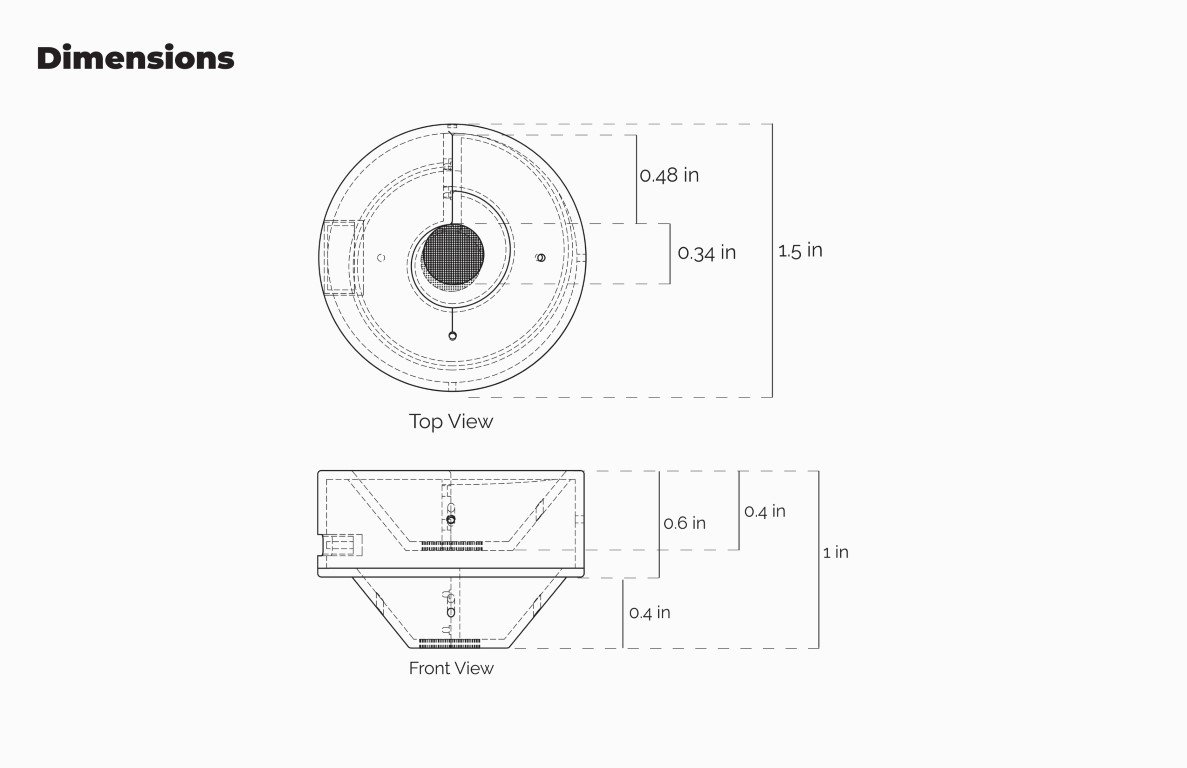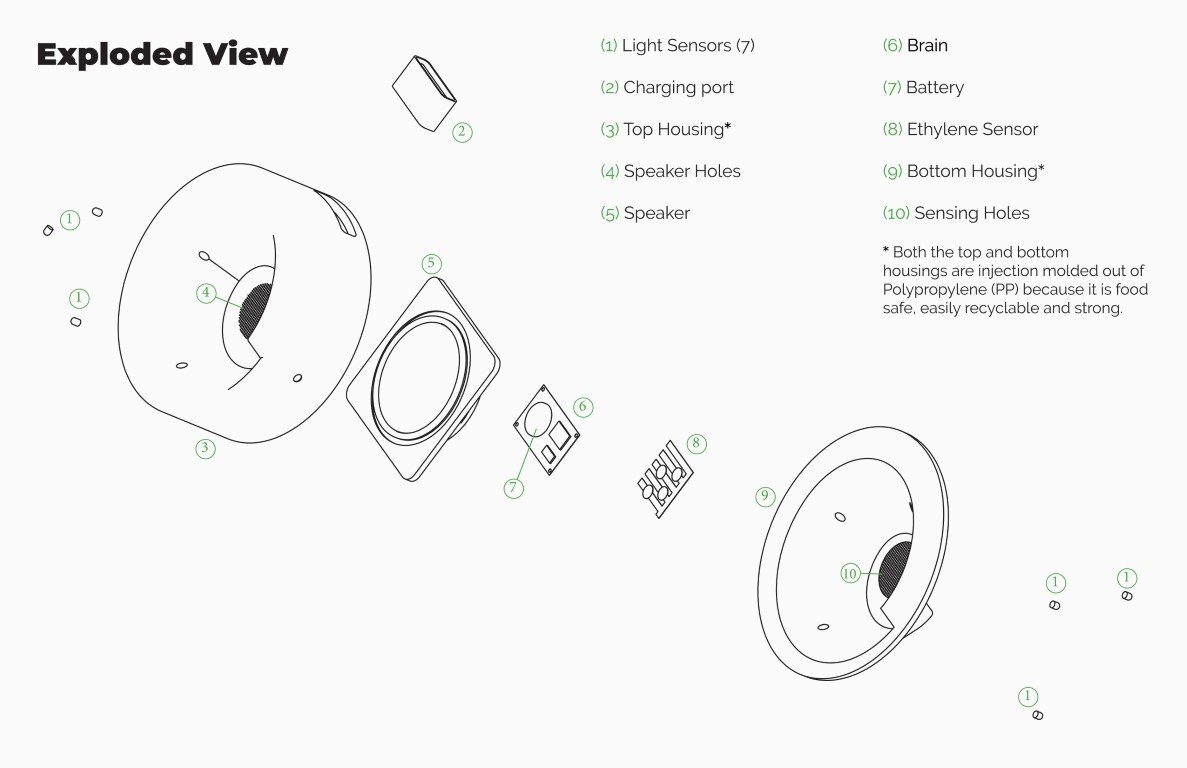
"Prosense” Food Spoilage Sensor
A project taken from research through ideation, prototyping, and form development.
I have trouble keeping track of expiration dates
I’m not the only one either. When I realized how many of my peers had similar problems I found a prime spot for design intervention.
How Can We Fix This Problem?
30% of America’s food supply ends up in landfills annually
43% of discarded food in landfills is from households
80% of discarded food from households is misunderstood expiration
How can we better track expiration dates?
Tracking chemical changes instead of time is more accurate.
What to Know
Ethylene is a hormone commonly produced by fruits and vegetables during the ripening process. It induces the ripening and subsequent rotting processes.
Eth·yl·ene
Project Goal
Design a product that reminds users of produce they’ve forgotten before it spoils.
Utilize chemical tracking to remove the active interaction needed in time-tracking methods
Fruits and vegetables produce ethylene on different bell curves we only need to measure when production drops off.
Ethylene Production
MIT developed the first sensor using an NFC tag* as a base and developed the second only a year later.
For this project, I’m assuming that these sensors will be ready for production in the coming years. These sensors were developed for industrial use. Prosense applies them to a new space, homes. To my knowledge, they have not yet seen any use.
*NFC tags can be scanned by a smartphone and display whatever content the tag is set to communicate. In this case, the tag was set to communicate the detection of gases.
Tracking Ethylene
Ethylene Sensor v.2 (2015)
Ethylene Sensor v.1 (2014)
Stacking Form Studies
Physical Studies
While sketching I also experimented in clay, looking for a form that stacked well. Through iteration I landed on a form that stacked solidly and provides tactile feedback when firmly locked into place.
Once twisted into place, pins extruding from the top dock with receivers on the top allowing Prosense to transfer power upwards. While rarely needing a charge, this allows the user to only need one USB Type-C for their whole collection.
Once placed on the prior unit, twisting Prosense locks it into place.
Interaction in Model
Electrical Pathways






























